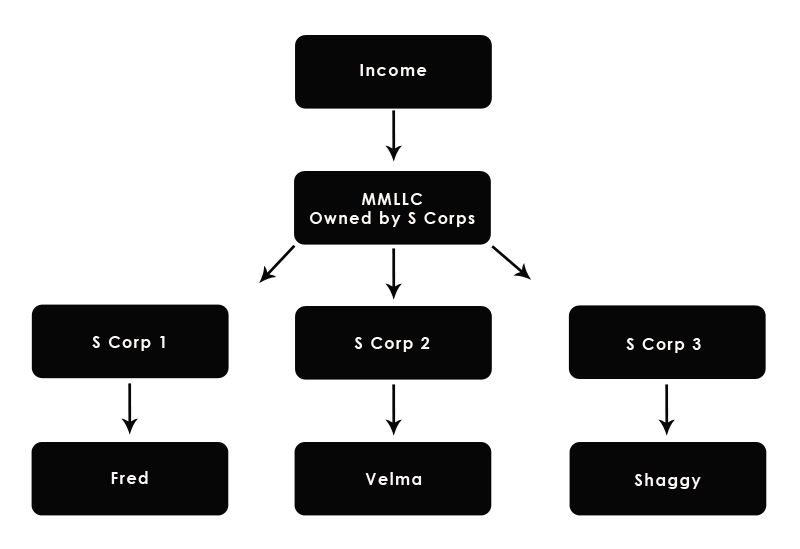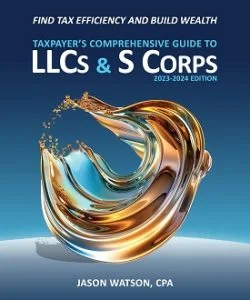
Business Advisory Services
Everything you need to help you launch your new business entity from business entity selection to multiple-entity business structures.
Hey - Our site just had a makeover and we are sorting through the hiccups!
Hey - Our site just had a makeover and we are sorting through the hiccups!

Everything you need to help you launch your new business entity from business entity selection to multiple-entity business structures.

Designed for rental property owners where WCG CPAs & Advisors supports you as your real estate CPA.

Everything you need from tax return preparation for your small business to your rental to your corporation is here.

WCG’s primary objective is to help you to feel comfortable about engaging with us
Table Of Contents
By Jason Watson, CPA
Posted Saturday, November 5, 2023
Another concern is controlled groups. If you think you are clever and create a holding company to only offer retirement savings plans to certain employees (like your family), the IRS says No. There are controlled group rules where a holding company that controls another business must offer the same retirement programs for both businesses.
 Two general types of controlled groups might exist- a parent-child and brother-sister. The parent-child is where one business owns another. That’s simple. It gets a bit more complicated with brother-sister where various individuals own multiple businesses. By definition, a brother-sister controlled group exists when five or fewer individuals, estates or trusts own a controlling interest (80% or more) in each organization and have effective control.
Two general types of controlled groups might exist- a parent-child and brother-sister. The parent-child is where one business owns another. That’s simple. It gets a bit more complicated with brother-sister where various individuals own multiple businesses. By definition, a brother-sister controlled group exists when five or fewer individuals, estates or trusts own a controlling interest (80% or more) in each organization and have effective control.
For example, you are smart and you connect with two other smart people to form a multi-member LLC. Since you have a revenue splitting scheme that varies from year to year, you use the multi-member LLC as a funnel and feed income to the underlying S corporations. Therefore, each person owns an S Corp that owns an equal interest in the multi-member LLC. Simple enough.
In this example, a 401k plan would be better implemented at the multi-member LLC level. Let’s dive into the details shall we?
Let’s say a law firm is structured as a partnership similar to the schematic above. There are three partners. Each partner is separately incorporated as a professional corporation and taxed as an S Corp. Each corporation has a one-third partnership interest in the law firm (MMLLC). The sole employee and sole shareholder of each professional corporation is an attorney who would otherwise be an individual partner of the law firm if he or she were not incorporated. Easy so far.
All billings for legal services are done by the law firm and partnership income is distributed among the corporate partners according to the Operating Agreement. The law firm is the First Service Organization (FSO) and each of the three S corporations is an A-Organization (A-Org) with respect to that FSO. The four organizations constitute an Affiliated Service Group (ASG). This is the “classic example” of an ASG and can create all kinds of problems with retirement plans.
How did we go from easy to yuck in just a few sentences? A business is automatically a First Service Organization (FSO) if it engages in one of the following fields-
This list should look a little familiar; it was the basis for the specified service trade or business (SSTB) designations for Section 199A. While you do not see certain professions called out, such as Financial Advisors, the IRS and ERISA are more concerned with function over form. Accounting + Consulting + Insurance might equal Financial Advisor. So be careful on trying to consider this list to be strict from a definitions perspective.
If you are an ASG, then the employees of all of the ASG businesses are deemed to be employed by a single employer for purposes of meeting the retirement plan provisions outlined below-
How do the IRS and ERISA find out? Challenging for sure! We’ve seen businesses run around with an ASG for a decade without a problem. But let’s say the IRS develops an app that allows them to peer over your shoulder. Aside from them telling you to floss more, they also notice your 401k plan.
 This KB article is an excerpt from our 420+ page book (some picture pages, but no scatch and sniff) which is available in paperback from Amazon, as an eBook for Kindle and as a PDF from ClickBank. We used to publish with iTunes and Nook, but keeping up with two different formats was brutal. You can cruise through these KB articles online, click on the fancy buttons below or visit our webpage which provides more information.
This KB article is an excerpt from our 420+ page book (some picture pages, but no scatch and sniff) which is available in paperback from Amazon, as an eBook for Kindle and as a PDF from ClickBank. We used to publish with iTunes and Nook, but keeping up with two different formats was brutal. You can cruise through these KB articles online, click on the fancy buttons below or visit our webpage which provides more information.
 |
 |
 |
| $49.95 | $39.95 | $29.95 |
Please use the form below to tell us a little about yourself, and what you have going on with your small business or 1099 contractor gig. WCG CPAs & Advisors are small business CPAs, tax professionals and consultants, and we look forward to talking to you!
The tax advisors, business consultants and rental property experts at WCG CPAs & Advisors are not salespeople; we are not putting lipstick on a pig expecting you to love it. Our job remains being professionally detached, giving you information and letting you decide within our ethical guidelines and your risk profiles.
We see far too many crazy schemes and half-baked ideas from attorneys and wealth managers. In some cases, they are good ideas. In most cases, all the entities, layering and mixed ownership is only the illusion of precision. As Chris Rock says, just because you can drive your car with your feet doesn’t make it a good idea. In other words, let’s not automatically convert “you can” into “you must.”
Let’s chat so you can be smart about it.
We typically schedule a 20-minute complimentary quick chat with one of our Partners or our amazing Senior Tax Professionals to determine if we are a good fit for each other, and how an engagement with our team looks. Tax returns only? Business advisory? Tax strategy and planning? Rental property support?

Taxes can be tricky. Chat with a WCG human now and get questions answered.

Everything you need to help you launch your new business entity from business entity selection to multiple-entity business structures.

Designed for rental property owners where WCG CPAs & Advisors supports you as your real estate CPA.

Everything you need from tax return preparation for your small business to your rental to your corporation is here.

WCG’s primary objective is to help you to feel comfortable about engaging with us
